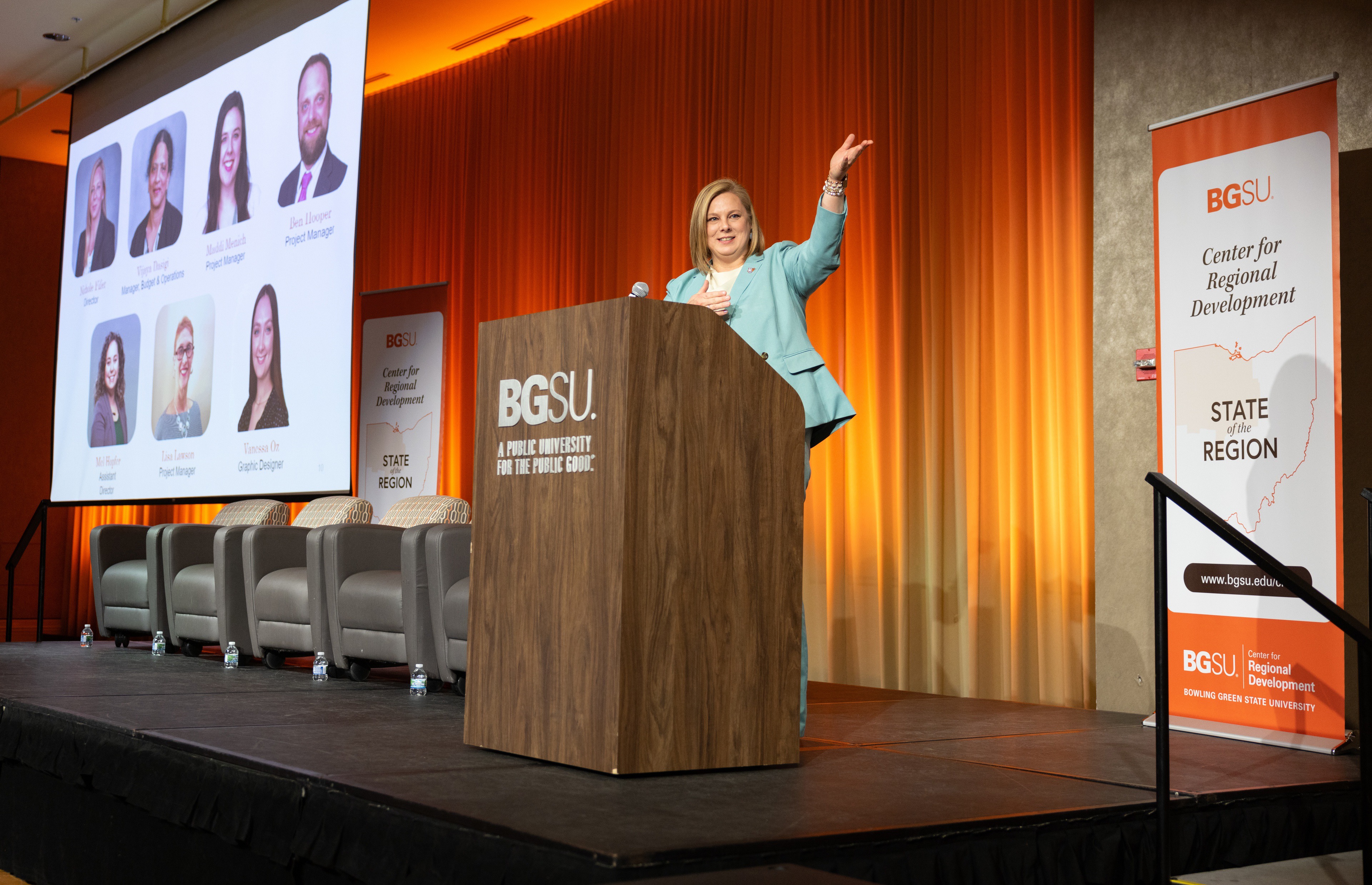
BGSU State of the Region Conference highlights importance of digital equity for economic and societal benefit
Estimated Reading Time:
University's Center for Regional Development and community partners work together to quantify and address the digital divide.
By Victoria Dugger
The Center for Regional Development at Bowling Green State University brought community leaders and learners together during the 22nd State of the Region Conference on Monday, March 11, with a focus on connecting and bridging the digital divide to create deeper regional resilience and a more inclusive economy.
At the conference, Dr. Nichole Fifer, director of the Center for Regional Development, presented data from the center showing strong regional employment numbers and GDP figures, particularly in manufacturing, professional and scientific services, and logistics, transportation and warehousing. She noted the center’s compiled data show Ohio’s GDP is sixth in the nation and Ohio is also one of six states with the nation’s lowest unemployment rates.
In addition to the voluminous statistics compiled by the Center for Regional Development, Fifer shared snapshots of information on regional broadband connectivity, revealing the work that is still needed to ensure all Ohioans have access to high-speed internet by increasing access and speeds to remove broadband deserts.
“When we look at availability, in aggregate it looks pretty good, but when we get down to those smaller geographies at the ZIP Code level, that’s when things get variable," Fifer said. "The work that the Center for Regional Development has done with the Toledo Lucas County Public Library and the Regional Digital Inclusion Alliance with BroadbandOhio has shown that the devil is definitely in the details when we’re talking about connectivity."
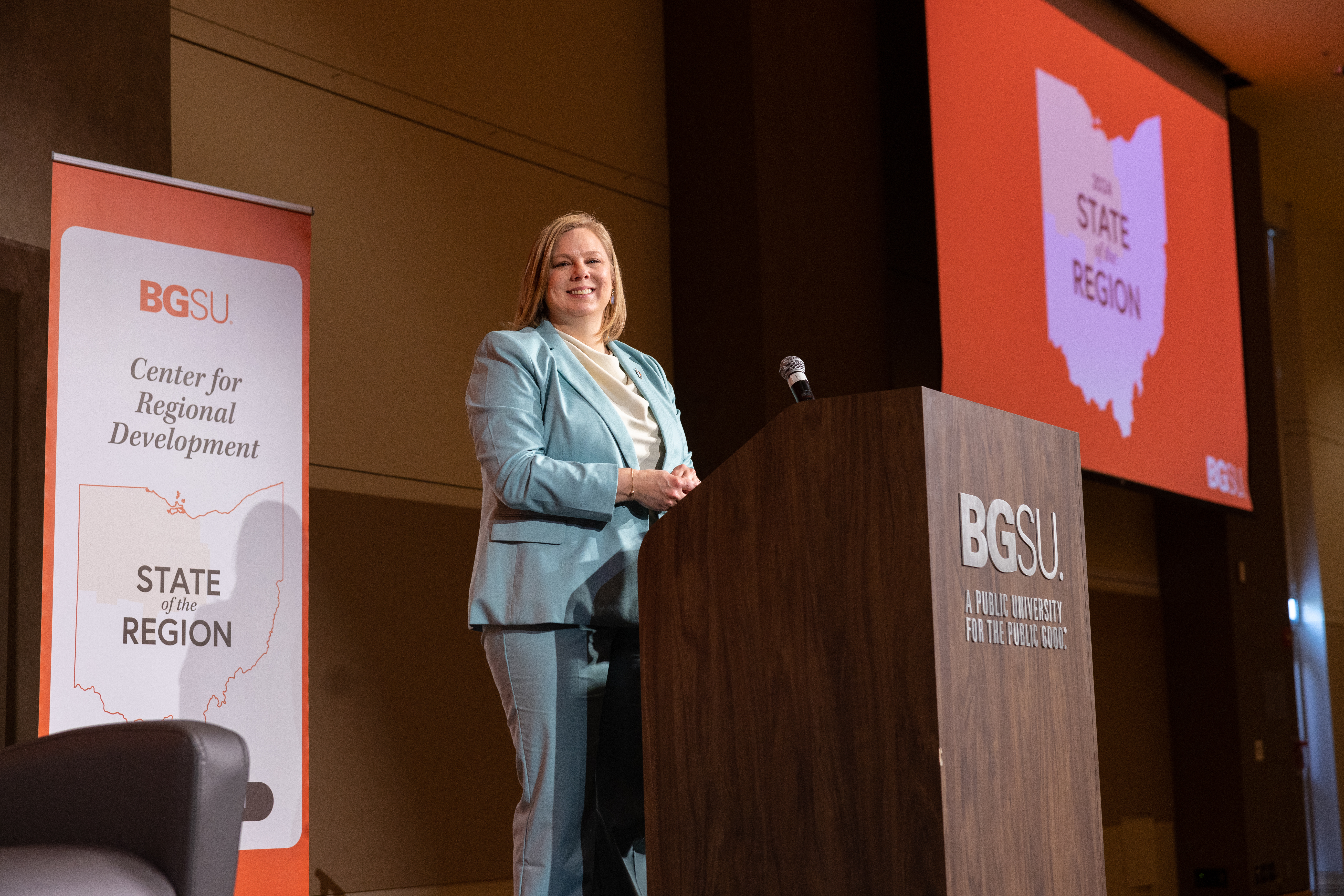
To foster strong economic futures for Ohio residents, the conference heard from multiple speakers and panelists – including several BGSU alumni – working on reducing barriers to internet connectivity and promoting digital skill literacy.
Angela Siefer, who founded the National Digital Inclusion Alliance in 2015 and has been involved in the field since 1997, spoke about the greater social and economic good that comes with attempting to close the digital divide.
“Digital equity – that phrase means let’s get communities’ access to information technology so they can fully participate in society, democracy and the economy. This is important both for individuals and for whole communities because we can’t design systems based upon technology for the community when there are some people not participating. That pulls everybody back and it raises the cost for everybody nationally,” Seifer said.
“This is important because this is how we are globally competitive – if we are creating amazing technologies but only some people can access them, we’re holding ourselves back in terms of that individual’s work potential, and we’re also holding ourselves back as a society in healthcare, education, finance, and all the things.”
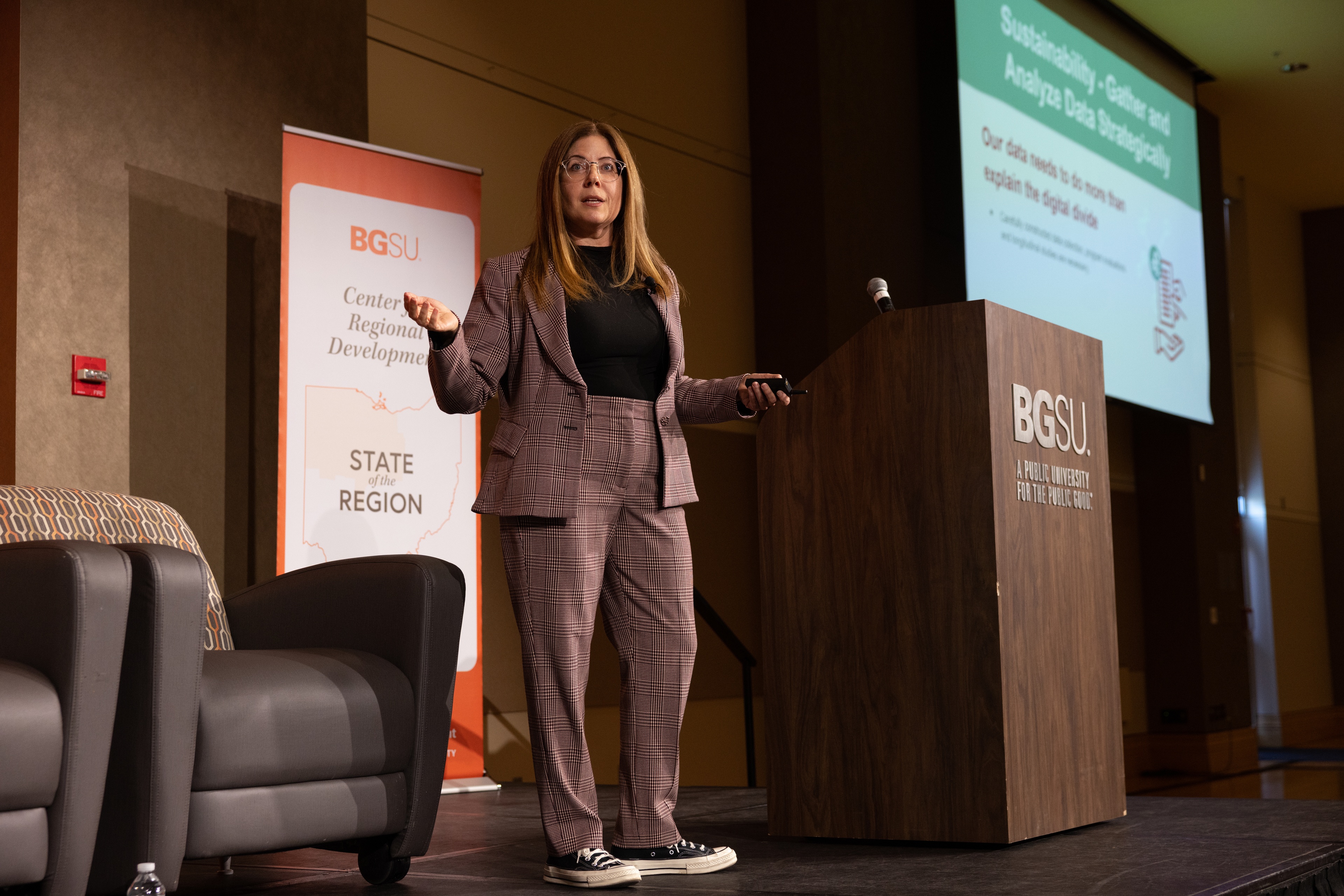
Digital inclusion, Seifer said, involves ensuring people have the access and the knowledge to use technology so they have the opportunity to live, learn, work and thrive. The NDIA takes a holistic approach to find solutions to bridge the digital gap, including digital device literacy, support, and access to broadband that’s affordable.
Spearheading digital inclusion efforts in northwestern Ohio is Lucas Camuso-Stall, director of government relations and advocacy for the Toledo Lucas County Public Library, who graduated from BGSU in 2015 with a degree in journalism with a concentration in public relations and a minor in political science.
Camuso-Stall was joined on stage by Anna Miller, manager of digital equity and inclusion with BroadbandOhio, which named the Toledo Lucas County Public Library the lead agency in the Northwest Ohio Regional Digital Inclusion Alliance in 2023. Through this partnership, the library was tasked with conducting in-person listening sessions and collecting direct feedback from local leaders, businesses, health and human service organizations and residents on the state of connectivity in their community. The findings are being used to help shape the State Digital Equity Plan and will inform the state of Ohio on how and where to make key technology and broadband investments.
“The pandemic was kind of that breaking point for a lot of us to really see what digital inequity looked like in our communities. We also were one of those many entities in the communities where we saw kids in our parking lots using the Wi-Fi to do homework. We saw parents trying to utilize new devices and laptops to get on Zoom because their workplace had gone remote,” Camuso-Stall said. “A lot of people were trying to get very quickly into the technology fold. This was a dramatic shift for our community as we were trying to collectively navigate what was going on with the pandemic, with what the future of work looked like and what the future of school looked like.”
The Infrastructure Investment and Jobs Act had over $60 billion allocated to both broadband development as well as digital equity, and to take advantage of federal funding to attempt to close the digital divide, the library coalition needed to be able to quantify the problem in both the northwestern Ohio region and Lucas County, the specific area the library serves. Camuso-Stall said they turned to the BGSU Center for Regional Development to help.
The center assisted with the data analysis, surveying and community outreach. Nine listening sessions were conducted in Lucas, Wood, Hancock, Crawford, Fulton, Defiance, Sandusky, Paulding and Ottawa counties, while hundreds of individuals responded to a circulated broadband survey. The library also partnered with BGSU for internal review board approval during the project.
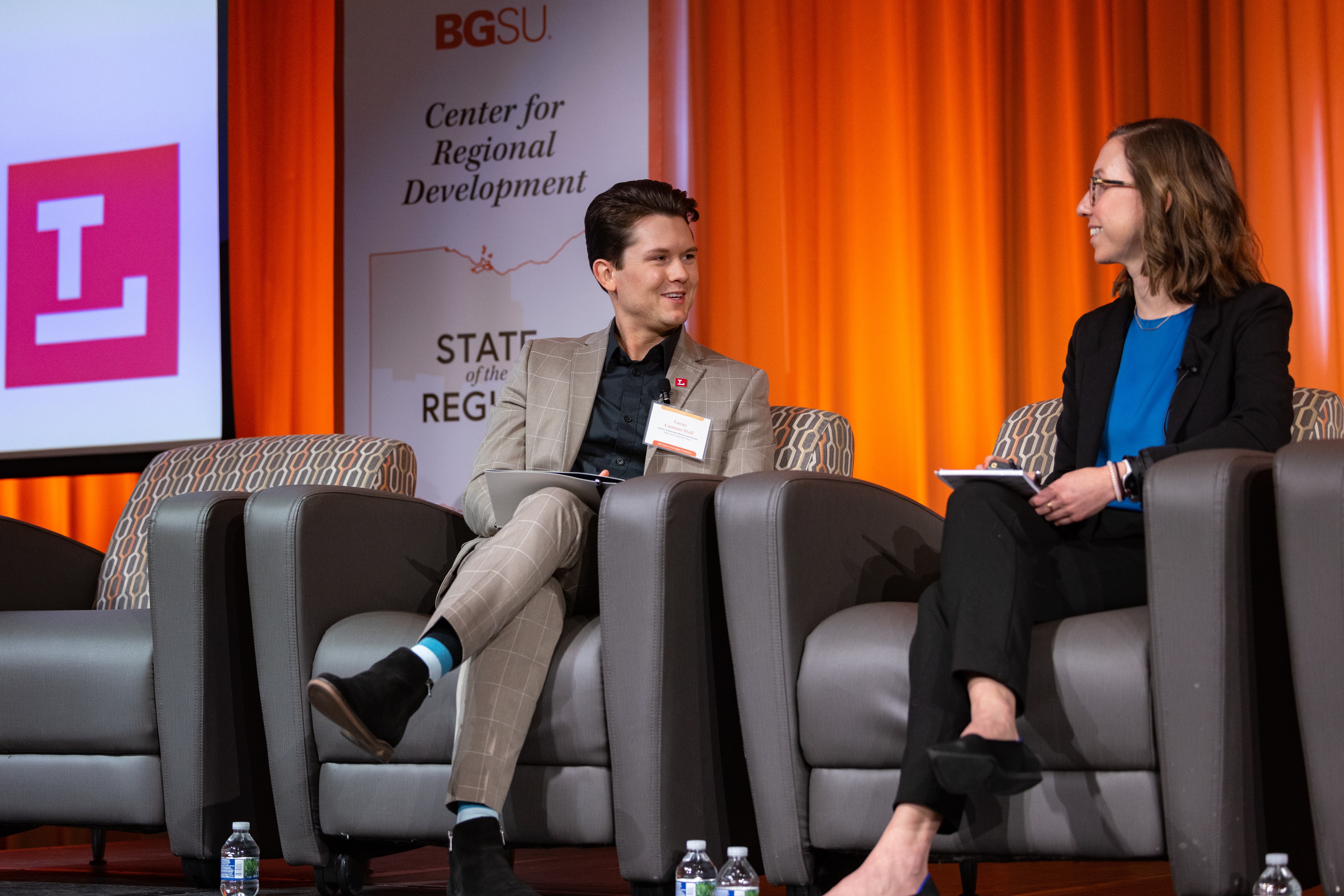
“In 2021-2022, we really wanted to quantify the issue of what digital dysconnectivity looked like in our community, so BGSU CRD put together this plan for us where we took this step-by-step process of how we're actually going to measure dysconnectivity in our community,” Camuso-Stall said. “Later, when we further started to dig into the data, again with the help of BGSU CRD and through leveraging some Census data, we saw that a little over 20,000 households in Lucas County alone did not have an Internet subscription. As we dug even further we saw that nearly 30,000 households in Lucas County also did not have an Internet-ready device within their household, whether that be a smartphone, a laptop, a tablet, a desktop.
“Imagine navigating your life in 2024 without a device. It seems impossible. How do you go about your day without key technology like a smartphone or a tablet or a laptop? But so many of our community members are doing that every single day.”
The library coalition developed goals to address the issues the center data showed from the 22-county footprint that stands to benefit from increased high-speed broadband access. In the listening sessions, Camuso-Stall said the listening sessions revealed that rural areas in particular perceive they have much to gain if affordable broadband access is a reality for their region.
“As we talk about remote work and people being able to live anywhere to do their jobs, a lot of rural economic development managers said they could do a much better job of getting people to come and live in their communities if they had a reliable internet connection,” he said. “The quality of life just in these rural communities is really fantastic and you're able to build a really strong sense of community, but if you don't have reliable Internet connection and you're asking people to move to your community to do their remote job, it's essentially a nonstarter.
“We heard from a lot of elected officials and economic development managers trying to attract businesses to come and establish a factory or manufacturing plant in their community but simply saying, ‘No, we can't because we don't have strong enough Internet connection in our community.’
“We also heard feedback from rural healthcare partners in rural hospitals as well. We had one individual from a hospital say that oftentimes their internet is disconnecting and dropping out when they're trying to email MRI scans to the next hospital over or to a specialist. So again, there are really interesting stories that we are hearing from our community members that we were able to send back to BroadbandOhio.”
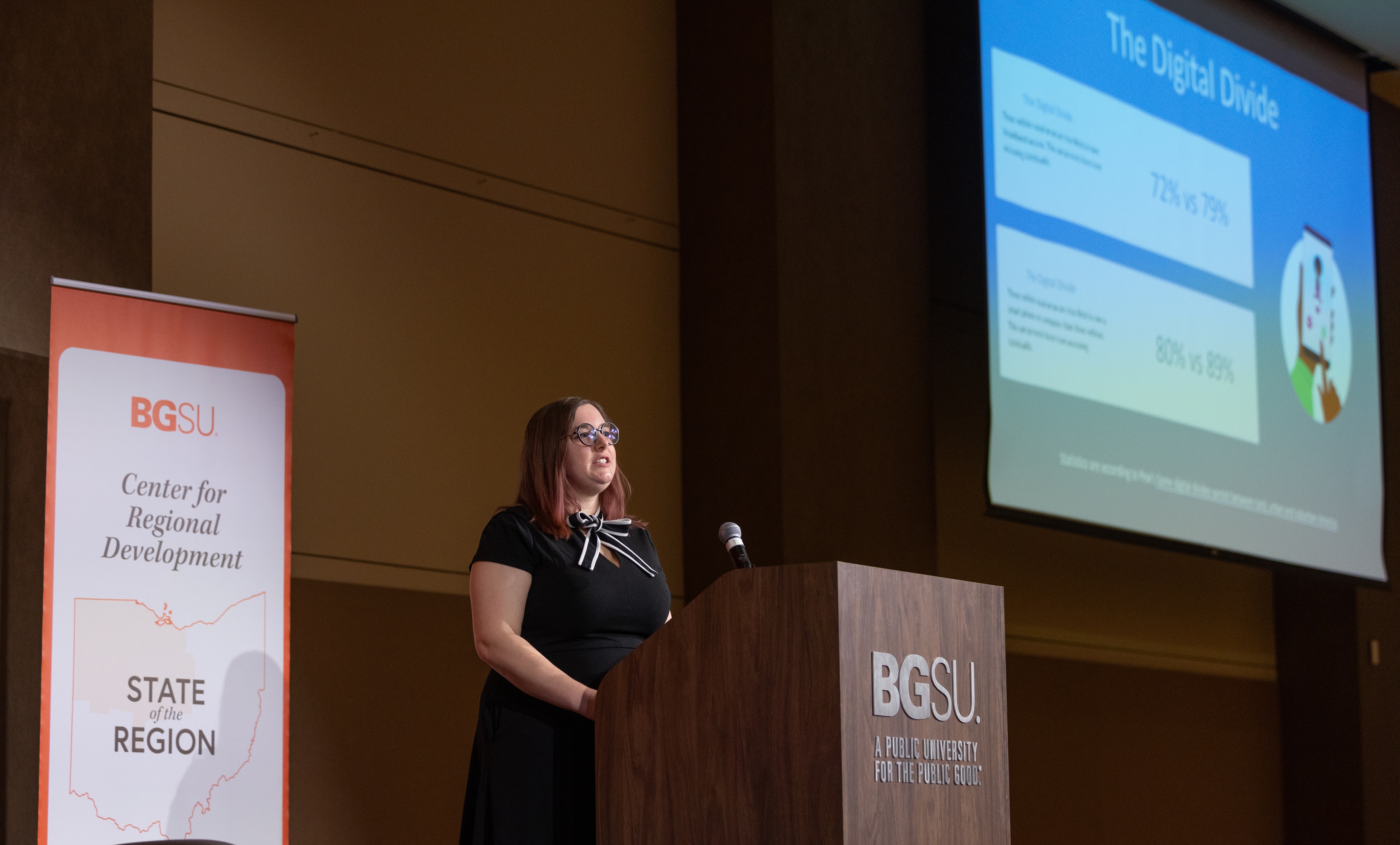
The conference also featured a discussion on the need for and the future of telehealth, especially in rural regions, with Danielle Renckly, program coordinator for the Upper Midwest Telehealth Resource Center, who noted that such connectivity and accessibility are critical to helping alleviate barriers to care for people.
“There are a number of barriers that are often heightened in rural communities, like lack of public transit, certain stigmas, lack of specialist access, and older, poorer and sicker patients. Telehealth can be a great tool – not the only tool but a great tool – for overcoming a lot of these barriers,” she said. “For example, you can see more providers through a telehealth visit than you would be able to see through who's within a 15-minute driving radius.”
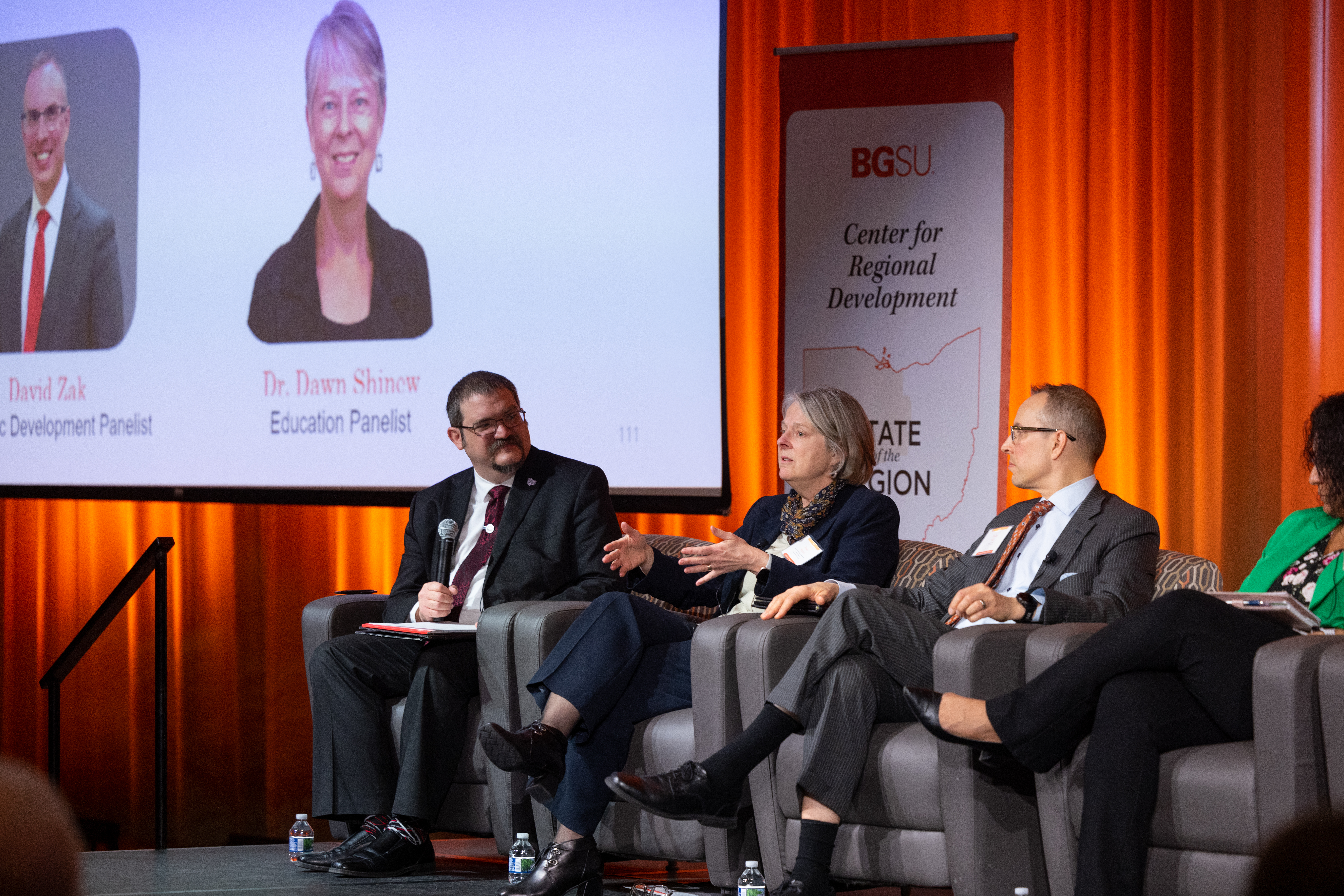
A robust panel discussion on the need for high-speed internet access to forge economic inclusivity in the areas of healthcare, workforce and economic development, and education rounded out the conference.
Adrienne Bradley, a BGSU alumna and director of Community Impact at ProMedica, called broadband access a “superdeterminant of health.” Tom Kroma, executive director at LISC Toledo, cited both access to broadband and digital literacy as key workforce issues, as workers need to be savvy to find jobs online and be involved in all aspects of job searching including resume creation.
David Zak, executive and economic development director at Crawford Partnership predicted a trend will be a move toward more rural areas, noting “broadband will drive that if we can work remotely and start business remotely.” And Dr. Dawn Shinew, dean of the BGSU College of Education and Human Development, called the possibility of widespread and affordable internet access “the great equalizer” that could help with uneven access to certain classes and educators.
The State of the Region speakers all stressed that it’s crucial to address challenges posed by the digital divide, especially in rural and economically disadvantaged areas, so the regional economy and beyond can be as robust as possible.
“Whose job is it to solve the digital divide? Friends, it’s all of us,” Siefer said.
Related Stories
Media Contact | Michael Bratton | mbratto@bgsu.edu | 419-372-6349
Updated: 03/13/2024 05:05PM




